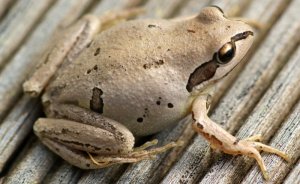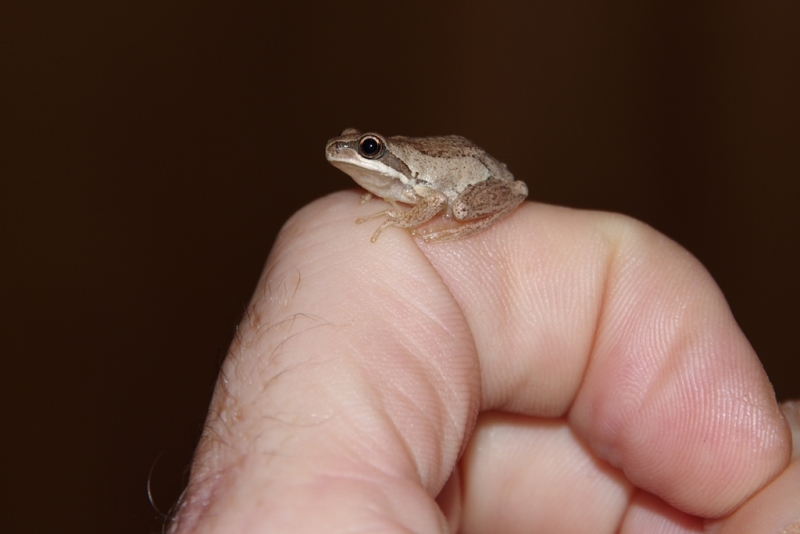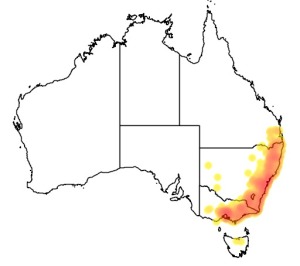Distinguishing features
L. verreauxii verreauxii is light brown to red brown above, with an often indistinct broad darker patch starting between the eyes and continues over the back. A dark band starting at the nostril runs through the eye and down to the shoulder, this is under lined by a white line starting at the mouth. The thighs and back of the legs are red with small black spots, however, there are also some larger black spots present in front of the thighs.
L. verreauxii alpina is mostly green on the dorsal surface with two brown bands running parallel to each other down the back. Thes bands start at the eye and are separated by a narrow band of green. The thighs and back of legs are the same as above. The belly of both sub-species is white. (Wikipedia)
Size
- Up to 3.5 cm (Length excluding hind legs)
Synonyms
Distribution
Distribution and habitat preferences
The alpine subspecies is restricted to the southern alps of New South Wales and Victoria. Verreaux's Tree Frog is widespread throughout south-eastern Queensland, coastal and highland regions of New South Wales and South-eastern Victoria.
Verreaux's Tree Frog inhabits swamps, dams and creeks in woodland, farmland, forest and cleared land. Males call from pondside vegetation or from the ground all year round, but intensifies during autumn and spring and after rain. As its name implies this frog makes a whistling noise weep-weep-weep-etc.
The alpine subspecies inhabits alpine ponds and pools of creeks in moorland, alpine forest and partly cleared land. Males have a similar call as above and call from beside the breeding site during spring and summer. (Wikipedia)





